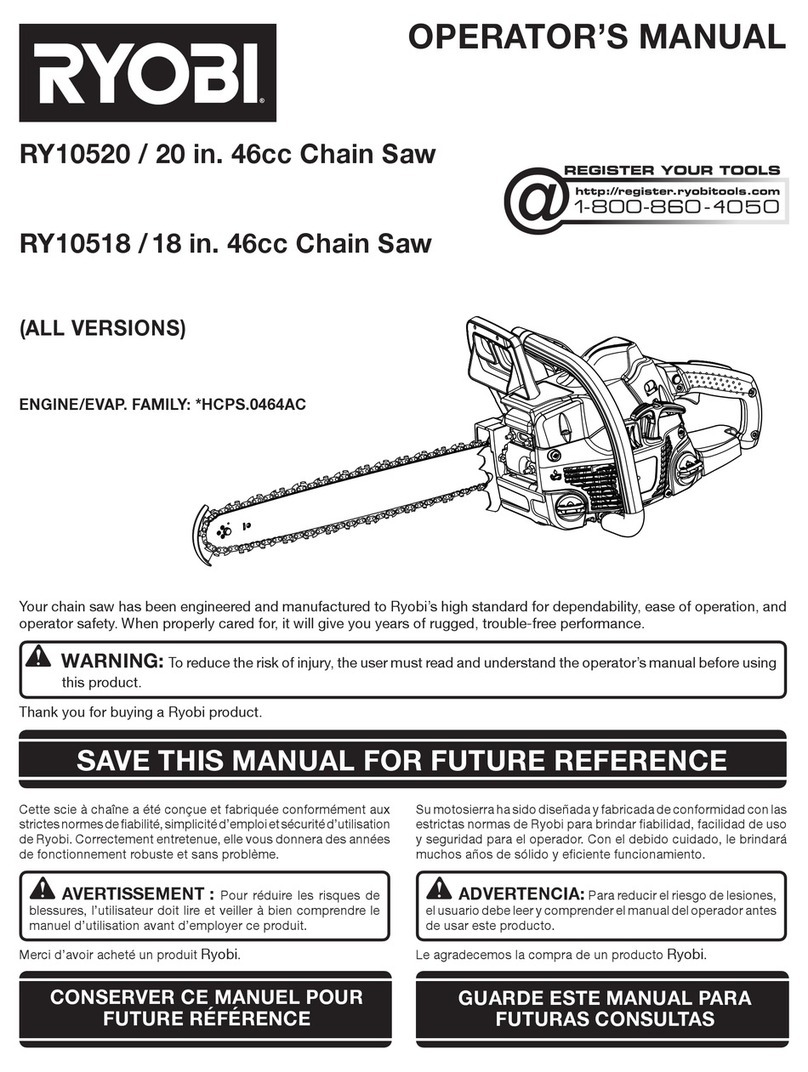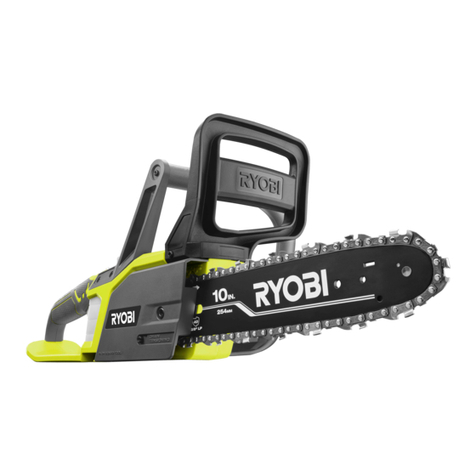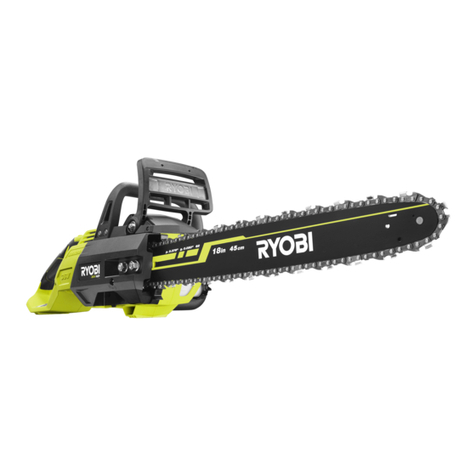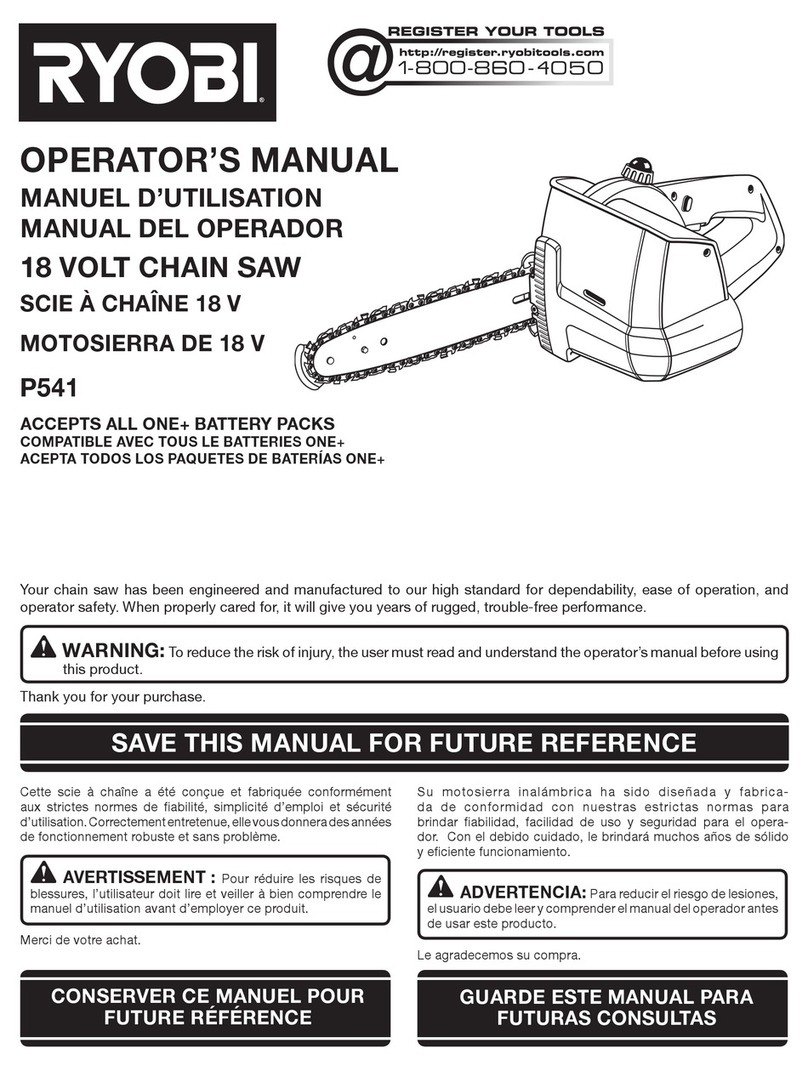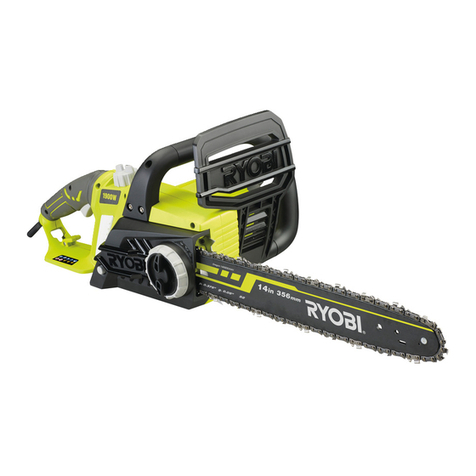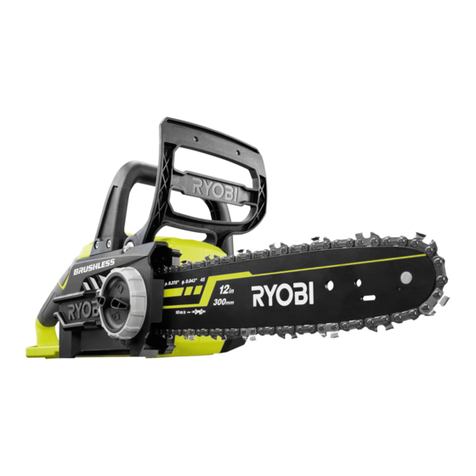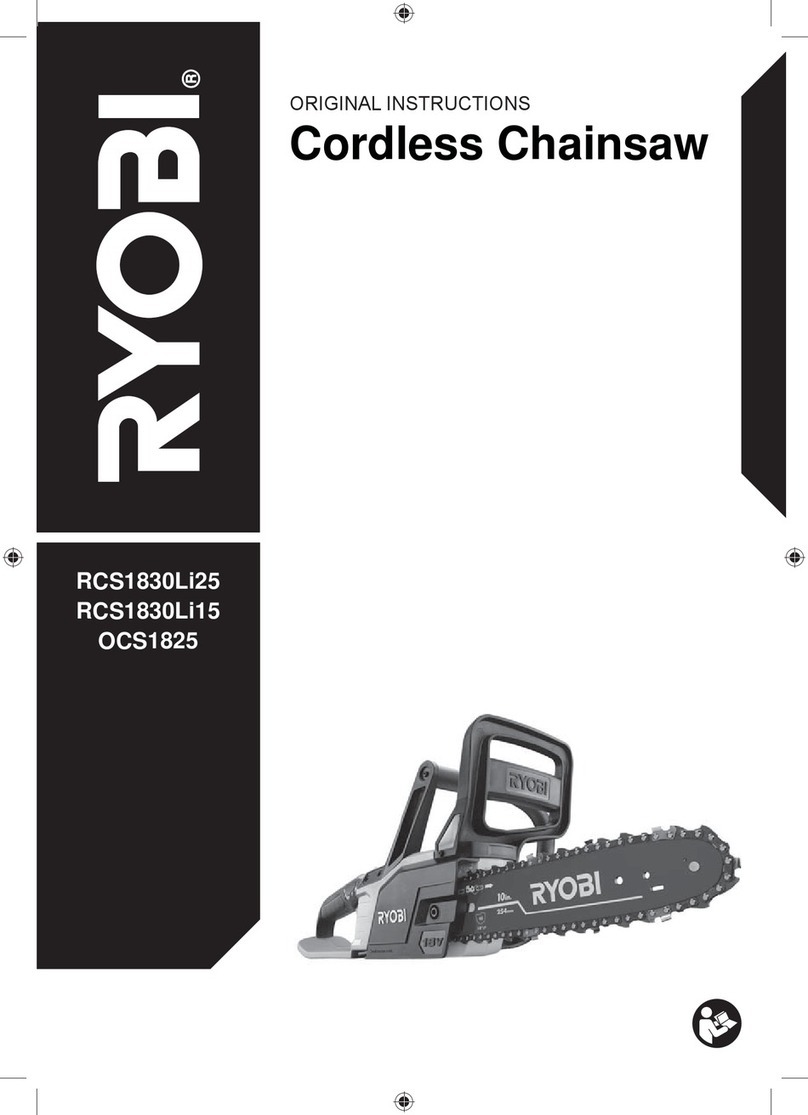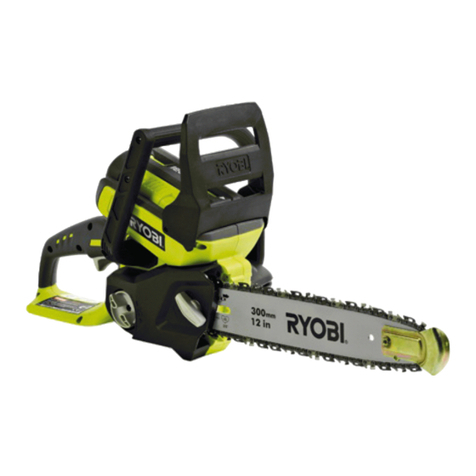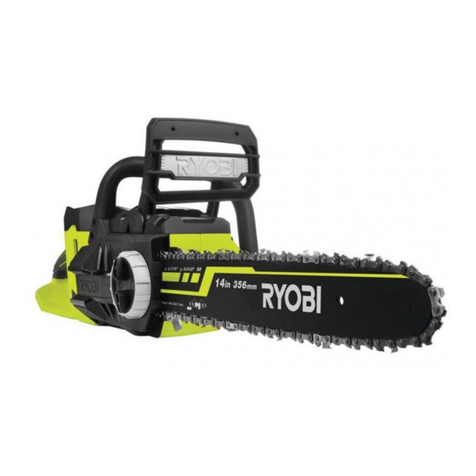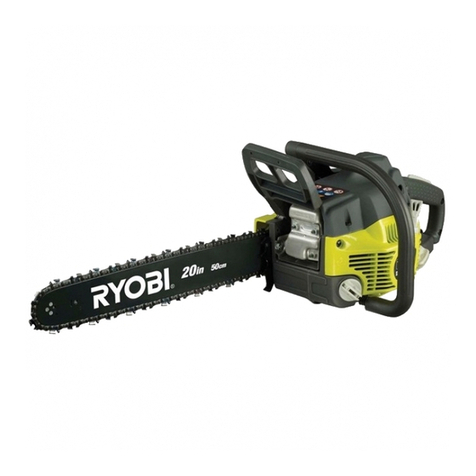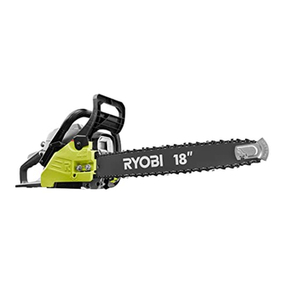2
Seriousinjurytotheoperator,helpers, and/or bystanders
may result from one-handed operation. A chainsaw is
intended for two-handed use.
■DO NOT OPERATE A CHAINSAW WHEN YOU ARE
FATIGUED. Neveroperate a chainsaw when you aretired
or under the influence of medication, drugs, or alcohol.
■USE SAFETY FOOTWEAR. Wear snug-fitting clothing,
protective gloves, and eye, hearing, and head protection
devices.
■DO NOT STAND ON ANY UNSTABLE SURFACE while
using your chainsaw: that includes ladders, scaffolds,
trees, etc.
■USE CAUTION WHEN HANDLING FUEL. Move the
chainsaw at least 50 feet (15 m) from the refuelling point
before starting the engine.
■DO NOT ALLOW OTHER PERSONS to be near the
chainsaw when starting or cutting with the chainsaw.
Keep bystanders and animals out of the work area.
■DO NOT START CUTTING until you have a clear work
area, secure footing, and a planned retreat path from the
falling tree.
■KEEP ALL PARTS OF YOUR BODY away from the saw
chain when the engine is running.
■ALWAYS CARRY THE CHAINSAW WITH THE ENGINE
STOPPED AND THE BRAKE ENGAGED, the guide bar
and saw chain to the rear, and the silencer away from
your body. When transporting the chainsaw, use the
appropriate guide bar scabbard.
■DO NOT OPERATE A CHAINSAW THAT IS DAMAGED,
improperly adjusted, or not completely and securely
assembled. Be sure that the saw chain stops moving
when the throttle control trigger is released.
■TURN OFF THE ENGINE before putting the chainsaw
down. DO NOT leave the engine running unattended. As
an additional safety precaution, apply the chain brake
before putting down the saw.
■USE EXTREME CAUTION whencutting small-size brush
and saplings because slender material may catch the
saw chain and be whipped toward you or pull you off
balance.
■WHEN CUTTING A LIMB under tension, be alert for
spring-back so that you will not be struck when the
tension in the wood fibres is released.
■KEEP THE HANDLES dry, clean, and free of oil or fuel
mixture.
■OPERATE THE CHAINSAW ONLY in well-ventilated
areas.
■DO NOT OPERATE A CHAINSAW IN A TREE unless
you have been specifically trained to do so.
■ALWAYS HAVE A FIRE EXTINGUISHER AVAILABLE
WHEN USING CHAIN SAW.
■ Use guide bar cover during transport and storage.
■ The chain saw should always be used with correctly
mounted spiked bumper.
■FOLLOW THE SHARPENING and maintenance
instructions for the saw chain.
■USE ONLY THE REPLACEMENT GUIDE BARS andlow
kick-back chains specified for your saw.
■DO NOT adapt your powerhead to a bow guide or use it
to power any attachments or devices not listed for your
saw.
■SAVE THESE INSTRUCTIONS. Refertothemfrequently
and use to instruct other users. If you lend someone this
tool, lend them these instructions also.
SPECIFIC SAFETY RULES
WARNING
The warnings, labels, and instructions found in this
section of the operator’s manual are for your safety.
Failure to follow all instructions may result in serious
personal injury.
GENERAL PRECAUTIONS
■DO NOT CUT VINES and/orsmall undergrowth (less than
76 mm (3 in.) in diameter).
■MUFFLER SURFACES ARE VERY HOT duringandafter
operationofthechainsaw; keep all body parts away from
the muffler. Serious burns may occur if contact is made
with the muffler.
■ALWAYS HOLD THE CHAINSAW WITH BOTH HANDS
when the engine is running. Use a firm grip with thumbs
and fingers encircling the chainsaw handles.
■NEVER LET ANYONE USE YOUR CHAINSAW whohas
notreceived adequate instructions in itsproper use. This
applies to rentals as well as privately owned saws.
■BEFORE YOU START THE ENGINE, makesurethe saw
chain is not contacting any object.
■OPERATE THE CHAINSAW only in well ventilated
areas.
PROPER CLOTHING FOR SAFETY
■Wear close-fitting clothing. Always wear heavy, long
trousers,boots, and gloves. Donotwearjewellery, shorts,
sandals,or gobarefoot.Donot wear loose-fittingclothing,
which could be drawn into the engine or catch the chain
or undergrowth. Wear overalls, jeans, or leggings made
ofcut-resistant material or ones that contain cut-resistant
inserts. Secure hair so that it is above shoulder level.
■Wear non-slip safety footwear and heavy-duty gloves to
improve your grip and to protect your hands.
■Wear eye, hearing, and head protection when operating
this equipment.
SAFETY RULES
